Financial Statement Analysis Assignment - HC1010 Accounting
VerifiedAdded on 2023/01/10
|9
|1296
|71
Homework Assignment
AI Summary
This assignment provides a detailed analysis of financial statements and ratios, including current, quick, inventory turnover, and debt ratios. Part A focuses on financial ratio analysis for 2018 and 2019, evaluating liquidity and efficiency. Part B defines income and revenue according to Australian Accounting Standards, applying these concepts to a case study. Part C analyzes financial ratios for two companies, ABC and XYZ, to determine which is suitable for a loan and investment, considering their financial positions and debt levels. The assignment demonstrates the application of accounting principles to assess business performance and make informed decisions. References from accounting resources and standards are included to support the analysis.

Accounting for business
Paraphrase This Document
Need a fresh take? Get an instant paraphrase of this document with our AI Paraphraser
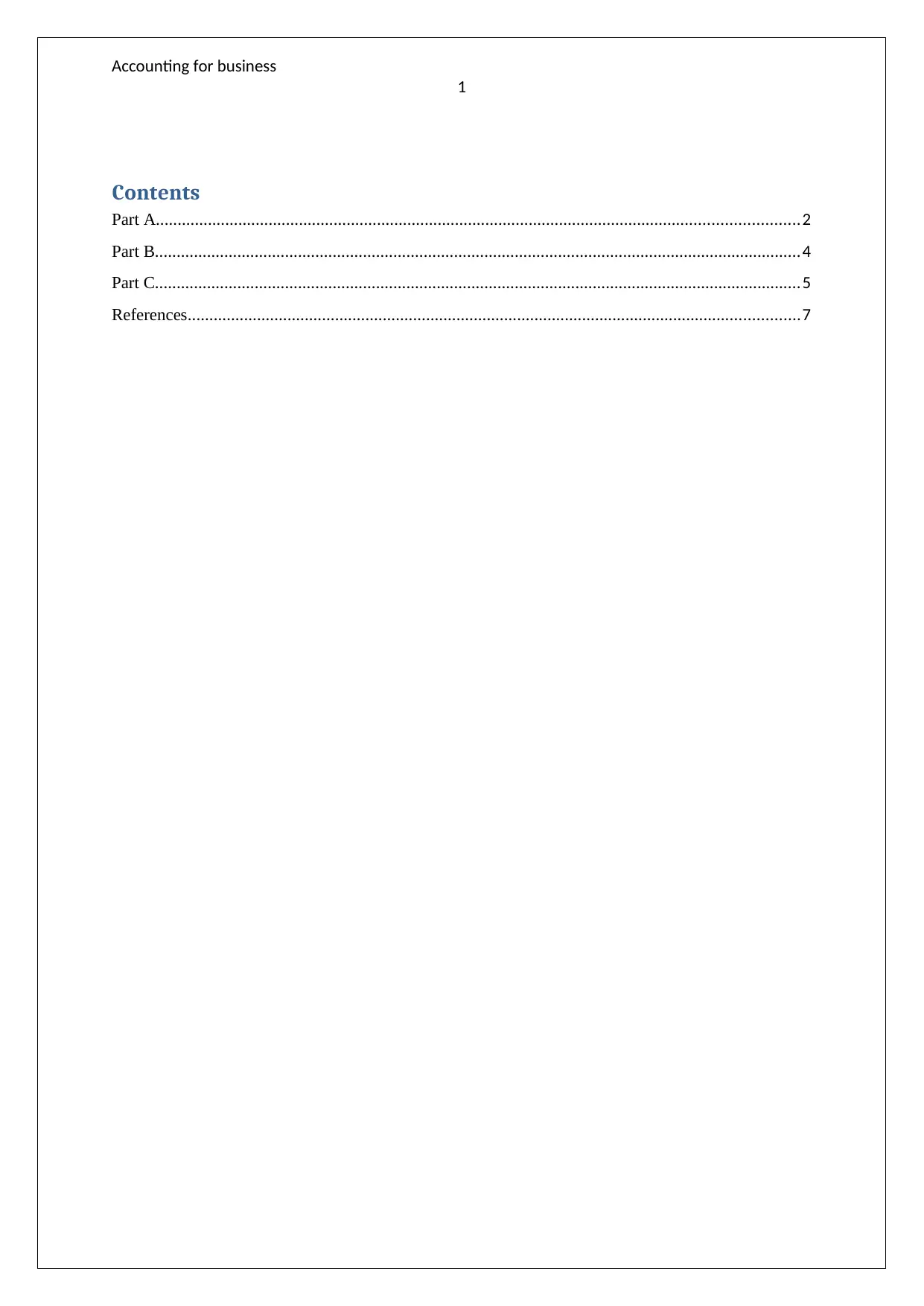
Accounting for business
1
Contents
Part A....................................................................................................................................................2
Part B.....................................................................................................................................................4
Part C.....................................................................................................................................................5
References.............................................................................................................................................7
1
Contents
Part A....................................................................................................................................................2
Part B.....................................................................................................................................................4
Part C.....................................................................................................................................................5
References.............................................................................................................................................7
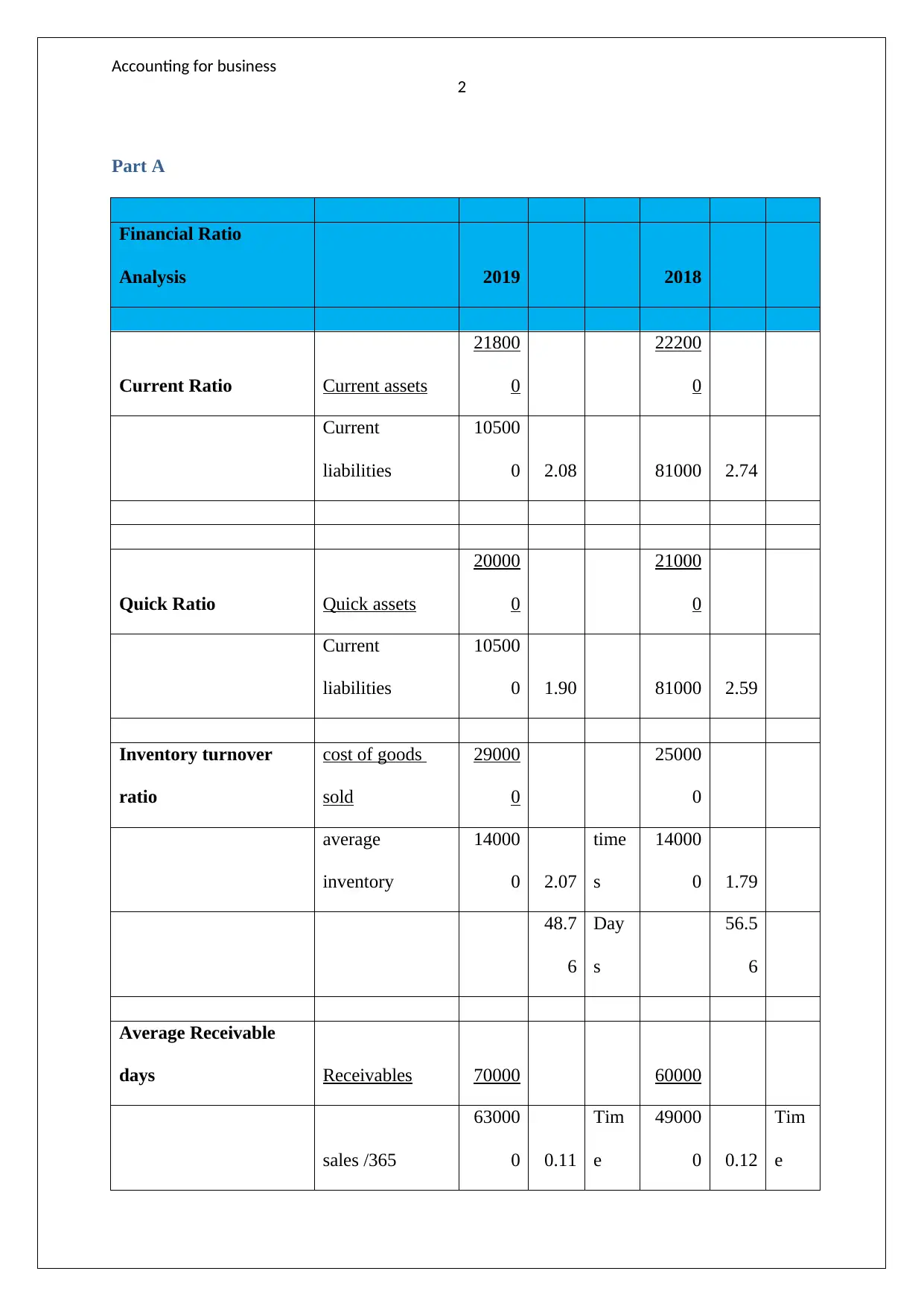
Accounting for business
2
Part A
Financial Ratio
Analysis 2019 2018
Current Ratio Current assets
21800
0
22200
0
Current
liabilities
10500
0 2.08 81000 2.74
Quick Ratio Quick assets
20000
0
21000
0
Current
liabilities
10500
0 1.90 81000 2.59
Inventory turnover
ratio
cost of goods
sold
29000
0
25000
0
average
inventory
14000
0 2.07
time
s
14000
0 1.79
48.7
6
Day
s
56.5
6
Average Receivable
days Receivables 70000 60000
sales /365
63000
0 0.11
Tim
e
49000
0 0.12
Tim
e
2
Part A
Financial Ratio
Analysis 2019 2018
Current Ratio Current assets
21800
0
22200
0
Current
liabilities
10500
0 2.08 81000 2.74
Quick Ratio Quick assets
20000
0
21000
0
Current
liabilities
10500
0 1.90 81000 2.59
Inventory turnover
ratio
cost of goods
sold
29000
0
25000
0
average
inventory
14000
0 2.07
time
s
14000
0 1.79
48.7
6
Day
s
56.5
6
Average Receivable
days Receivables 70000 60000
sales /365
63000
0 0.11
Tim
e
49000
0 0.12
Tim
e
⊘ This is a preview!⊘
Do you want full access?
Subscribe today to unlock all pages.

Trusted by 1+ million students worldwide
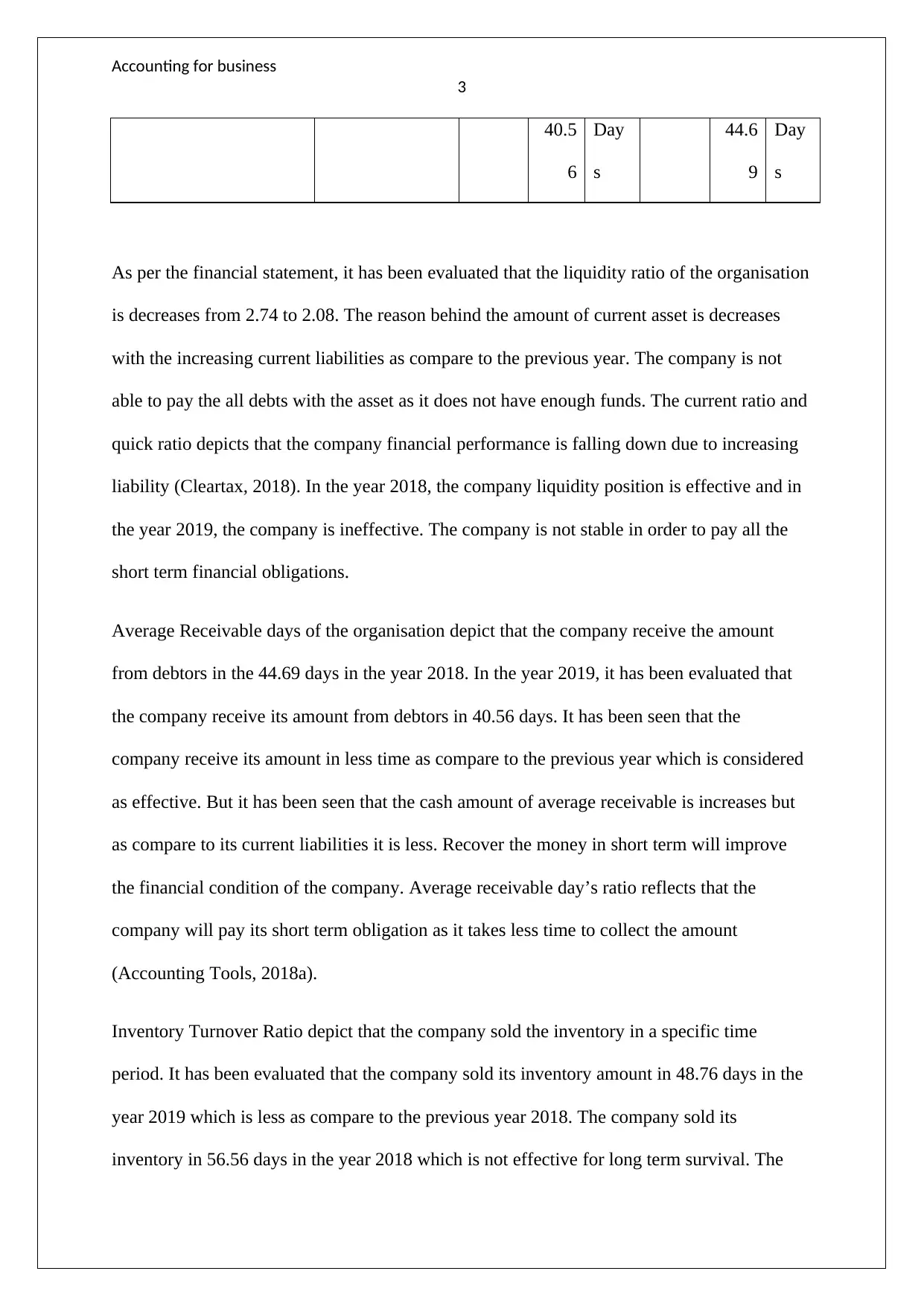
Accounting for business
3
40.5
6
Day
s
44.6
9
Day
s
As per the financial statement, it has been evaluated that the liquidity ratio of the organisation
is decreases from 2.74 to 2.08. The reason behind the amount of current asset is decreases
with the increasing current liabilities as compare to the previous year. The company is not
able to pay the all debts with the asset as it does not have enough funds. The current ratio and
quick ratio depicts that the company financial performance is falling down due to increasing
liability (Cleartax, 2018). In the year 2018, the company liquidity position is effective and in
the year 2019, the company is ineffective. The company is not stable in order to pay all the
short term financial obligations.
Average Receivable days of the organisation depict that the company receive the amount
from debtors in the 44.69 days in the year 2018. In the year 2019, it has been evaluated that
the company receive its amount from debtors in 40.56 days. It has been seen that the
company receive its amount in less time as compare to the previous year which is considered
as effective. But it has been seen that the cash amount of average receivable is increases but
as compare to its current liabilities it is less. Recover the money in short term will improve
the financial condition of the company. Average receivable day’s ratio reflects that the
company will pay its short term obligation as it takes less time to collect the amount
(Accounting Tools, 2018a).
Inventory Turnover Ratio depict that the company sold the inventory in a specific time
period. It has been evaluated that the company sold its inventory amount in 48.76 days in the
year 2019 which is less as compare to the previous year 2018. The company sold its
inventory in 56.56 days in the year 2018 which is not effective for long term survival. The
3
40.5
6
Day
s
44.6
9
Day
s
As per the financial statement, it has been evaluated that the liquidity ratio of the organisation
is decreases from 2.74 to 2.08. The reason behind the amount of current asset is decreases
with the increasing current liabilities as compare to the previous year. The company is not
able to pay the all debts with the asset as it does not have enough funds. The current ratio and
quick ratio depicts that the company financial performance is falling down due to increasing
liability (Cleartax, 2018). In the year 2018, the company liquidity position is effective and in
the year 2019, the company is ineffective. The company is not stable in order to pay all the
short term financial obligations.
Average Receivable days of the organisation depict that the company receive the amount
from debtors in the 44.69 days in the year 2018. In the year 2019, it has been evaluated that
the company receive its amount from debtors in 40.56 days. It has been seen that the
company receive its amount in less time as compare to the previous year which is considered
as effective. But it has been seen that the cash amount of average receivable is increases but
as compare to its current liabilities it is less. Recover the money in short term will improve
the financial condition of the company. Average receivable day’s ratio reflects that the
company will pay its short term obligation as it takes less time to collect the amount
(Accounting Tools, 2018a).
Inventory Turnover Ratio depict that the company sold the inventory in a specific time
period. It has been evaluated that the company sold its inventory amount in 48.76 days in the
year 2019 which is less as compare to the previous year 2018. The company sold its
inventory in 56.56 days in the year 2018 which is not effective for long term survival. The
Paraphrase This Document
Need a fresh take? Get an instant paraphrase of this document with our AI Paraphraser
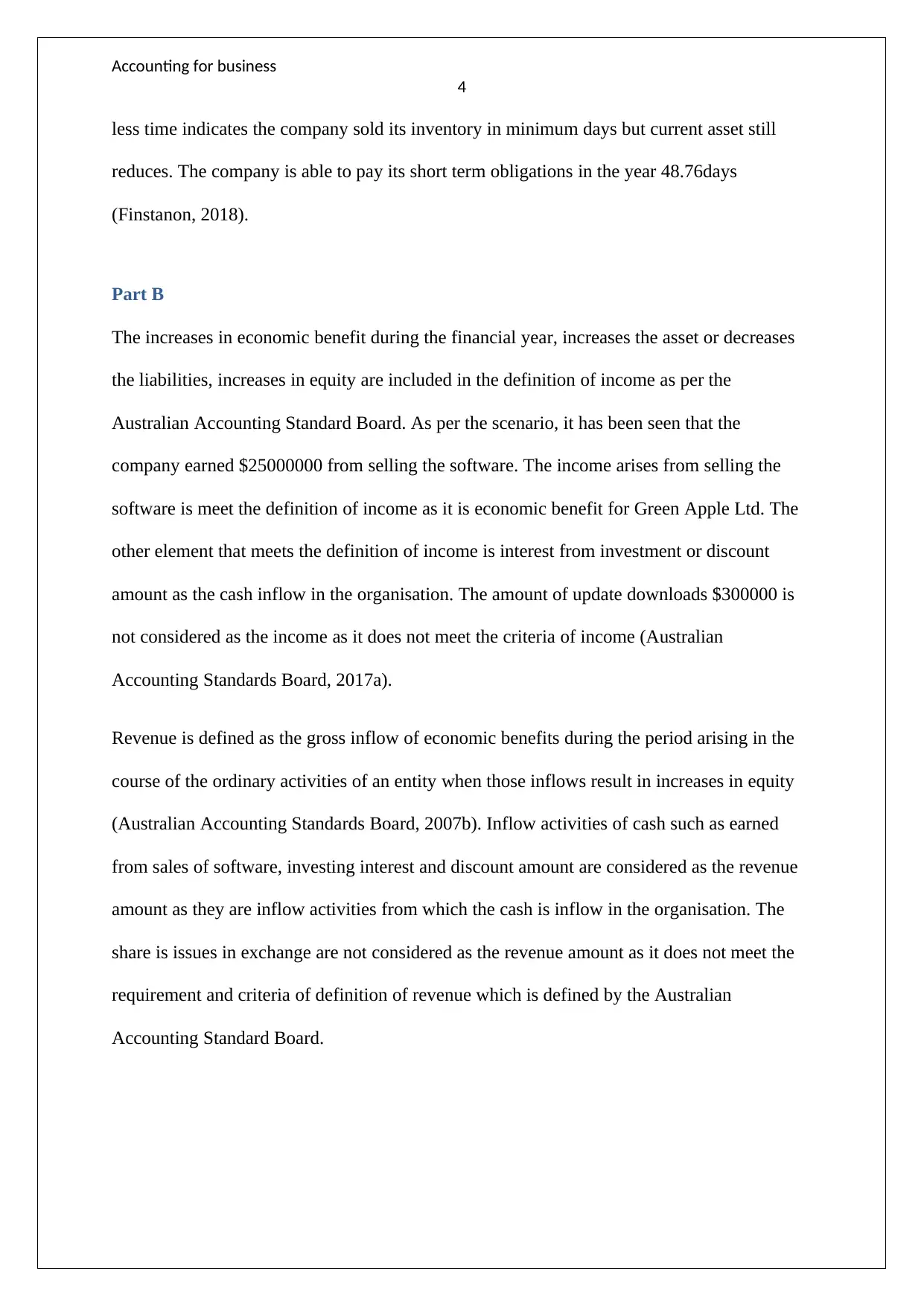
Accounting for business
4
less time indicates the company sold its inventory in minimum days but current asset still
reduces. The company is able to pay its short term obligations in the year 48.76days
(Finstanon, 2018).
Part B
The increases in economic benefit during the financial year, increases the asset or decreases
the liabilities, increases in equity are included in the definition of income as per the
Australian Accounting Standard Board. As per the scenario, it has been seen that the
company earned $25000000 from selling the software. The income arises from selling the
software is meet the definition of income as it is economic benefit for Green Apple Ltd. The
other element that meets the definition of income is interest from investment or discount
amount as the cash inflow in the organisation. The amount of update downloads $300000 is
not considered as the income as it does not meet the criteria of income (Australian
Accounting Standards Board, 2017a).
Revenue is defined as the gross inflow of economic benefits during the period arising in the
course of the ordinary activities of an entity when those inflows result in increases in equity
(Australian Accounting Standards Board, 2007b). Inflow activities of cash such as earned
from sales of software, investing interest and discount amount are considered as the revenue
amount as they are inflow activities from which the cash is inflow in the organisation. The
share is issues in exchange are not considered as the revenue amount as it does not meet the
requirement and criteria of definition of revenue which is defined by the Australian
Accounting Standard Board.
4
less time indicates the company sold its inventory in minimum days but current asset still
reduces. The company is able to pay its short term obligations in the year 48.76days
(Finstanon, 2018).
Part B
The increases in economic benefit during the financial year, increases the asset or decreases
the liabilities, increases in equity are included in the definition of income as per the
Australian Accounting Standard Board. As per the scenario, it has been seen that the
company earned $25000000 from selling the software. The income arises from selling the
software is meet the definition of income as it is economic benefit for Green Apple Ltd. The
other element that meets the definition of income is interest from investment or discount
amount as the cash inflow in the organisation. The amount of update downloads $300000 is
not considered as the income as it does not meet the criteria of income (Australian
Accounting Standards Board, 2017a).
Revenue is defined as the gross inflow of economic benefits during the period arising in the
course of the ordinary activities of an entity when those inflows result in increases in equity
(Australian Accounting Standards Board, 2007b). Inflow activities of cash such as earned
from sales of software, investing interest and discount amount are considered as the revenue
amount as they are inflow activities from which the cash is inflow in the organisation. The
share is issues in exchange are not considered as the revenue amount as it does not meet the
requirement and criteria of definition of revenue which is defined by the Australian
Accounting Standard Board.
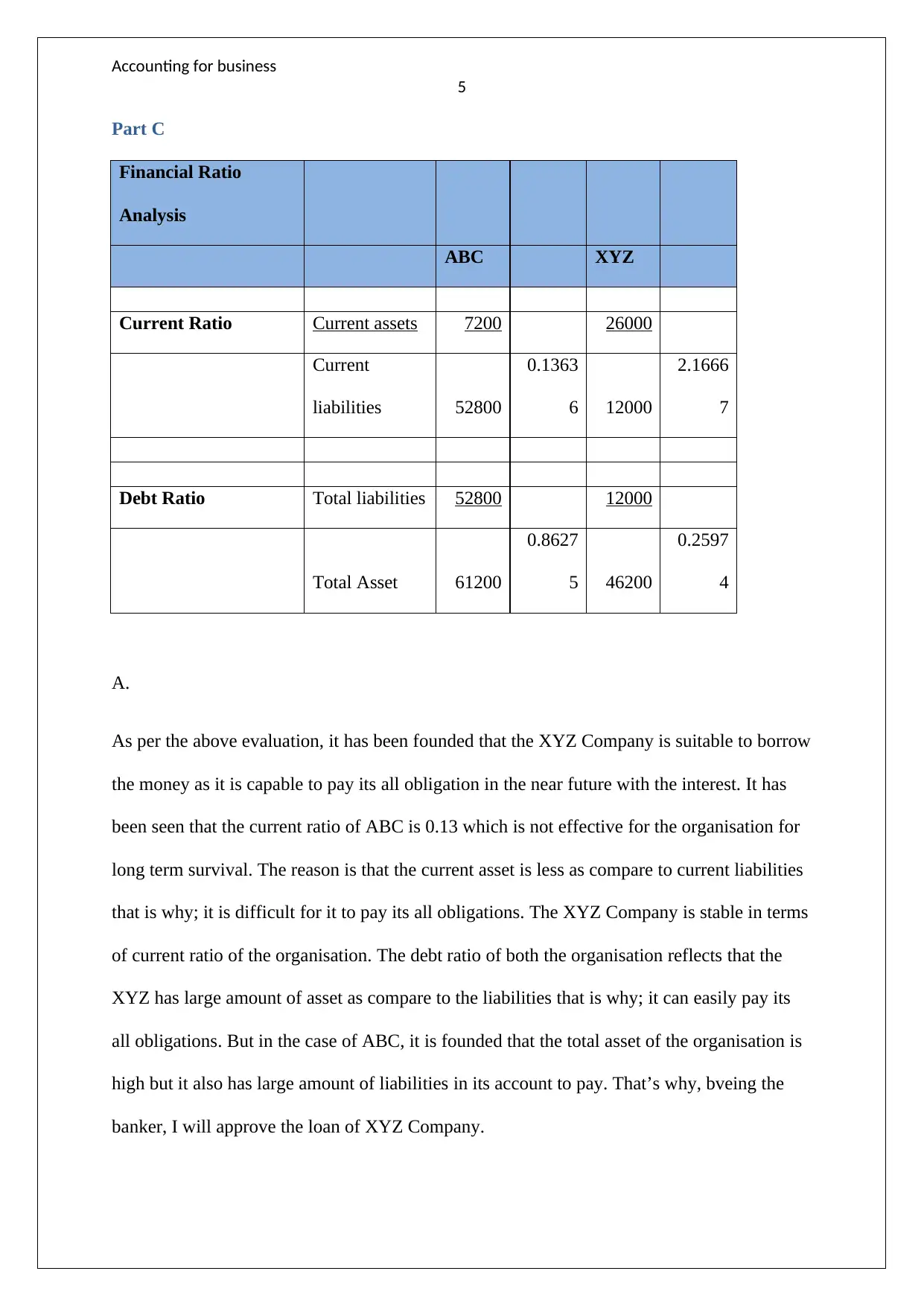
Accounting for business
5
Part C
Financial Ratio
Analysis
ABC XYZ
Current Ratio Current assets 7200 26000
Current
liabilities 52800
0.1363
6 12000
2.1666
7
Debt Ratio Total liabilities 52800 12000
Total Asset 61200
0.8627
5 46200
0.2597
4
A.
As per the above evaluation, it has been founded that the XYZ Company is suitable to borrow
the money as it is capable to pay its all obligation in the near future with the interest. It has
been seen that the current ratio of ABC is 0.13 which is not effective for the organisation for
long term survival. The reason is that the current asset is less as compare to current liabilities
that is why; it is difficult for it to pay its all obligations. The XYZ Company is stable in terms
of current ratio of the organisation. The debt ratio of both the organisation reflects that the
XYZ has large amount of asset as compare to the liabilities that is why; it can easily pay its
all obligations. But in the case of ABC, it is founded that the total asset of the organisation is
high but it also has large amount of liabilities in its account to pay. That’s why, bveing the
banker, I will approve the loan of XYZ Company.
5
Part C
Financial Ratio
Analysis
ABC XYZ
Current Ratio Current assets 7200 26000
Current
liabilities 52800
0.1363
6 12000
2.1666
7
Debt Ratio Total liabilities 52800 12000
Total Asset 61200
0.8627
5 46200
0.2597
4
A.
As per the above evaluation, it has been founded that the XYZ Company is suitable to borrow
the money as it is capable to pay its all obligation in the near future with the interest. It has
been seen that the current ratio of ABC is 0.13 which is not effective for the organisation for
long term survival. The reason is that the current asset is less as compare to current liabilities
that is why; it is difficult for it to pay its all obligations. The XYZ Company is stable in terms
of current ratio of the organisation. The debt ratio of both the organisation reflects that the
XYZ has large amount of asset as compare to the liabilities that is why; it can easily pay its
all obligations. But in the case of ABC, it is founded that the total asset of the organisation is
high but it also has large amount of liabilities in its account to pay. That’s why, bveing the
banker, I will approve the loan of XYZ Company.
⊘ This is a preview!⊘
Do you want full access?
Subscribe today to unlock all pages.

Trusted by 1+ million students worldwide
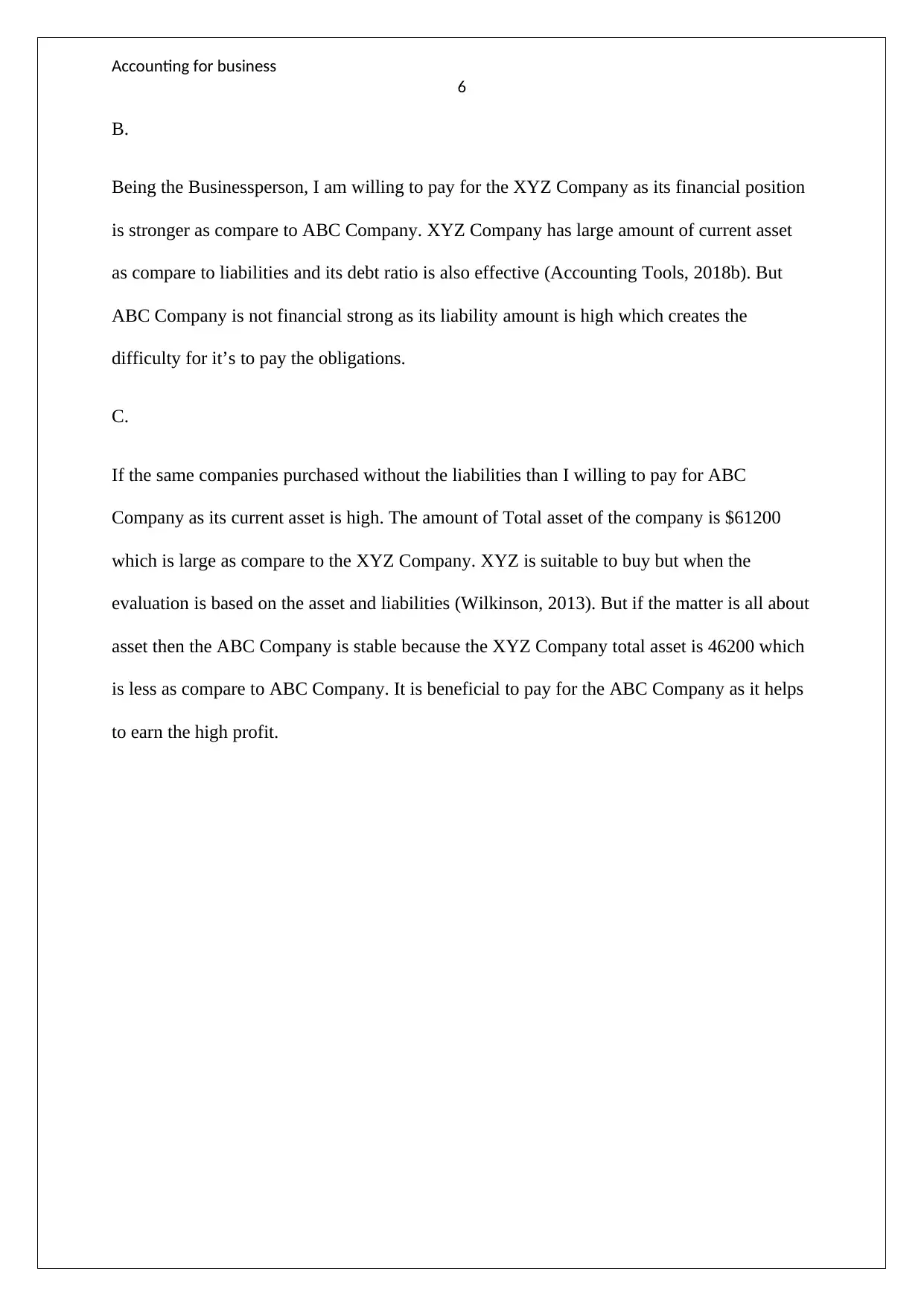
Accounting for business
6
B.
Being the Businessperson, I am willing to pay for the XYZ Company as its financial position
is stronger as compare to ABC Company. XYZ Company has large amount of current asset
as compare to liabilities and its debt ratio is also effective (Accounting Tools, 2018b). But
ABC Company is not financial strong as its liability amount is high which creates the
difficulty for it’s to pay the obligations.
C.
If the same companies purchased without the liabilities than I willing to pay for ABC
Company as its current asset is high. The amount of Total asset of the company is $61200
which is large as compare to the XYZ Company. XYZ is suitable to buy but when the
evaluation is based on the asset and liabilities (Wilkinson, 2013). But if the matter is all about
asset then the ABC Company is stable because the XYZ Company total asset is 46200 which
is less as compare to ABC Company. It is beneficial to pay for the ABC Company as it helps
to earn the high profit.
6
B.
Being the Businessperson, I am willing to pay for the XYZ Company as its financial position
is stronger as compare to ABC Company. XYZ Company has large amount of current asset
as compare to liabilities and its debt ratio is also effective (Accounting Tools, 2018b). But
ABC Company is not financial strong as its liability amount is high which creates the
difficulty for it’s to pay the obligations.
C.
If the same companies purchased without the liabilities than I willing to pay for ABC
Company as its current asset is high. The amount of Total asset of the company is $61200
which is large as compare to the XYZ Company. XYZ is suitable to buy but when the
evaluation is based on the asset and liabilities (Wilkinson, 2013). But if the matter is all about
asset then the ABC Company is stable because the XYZ Company total asset is 46200 which
is less as compare to ABC Company. It is beneficial to pay for the ABC Company as it helps
to earn the high profit.
Paraphrase This Document
Need a fresh take? Get an instant paraphrase of this document with our AI Paraphraser
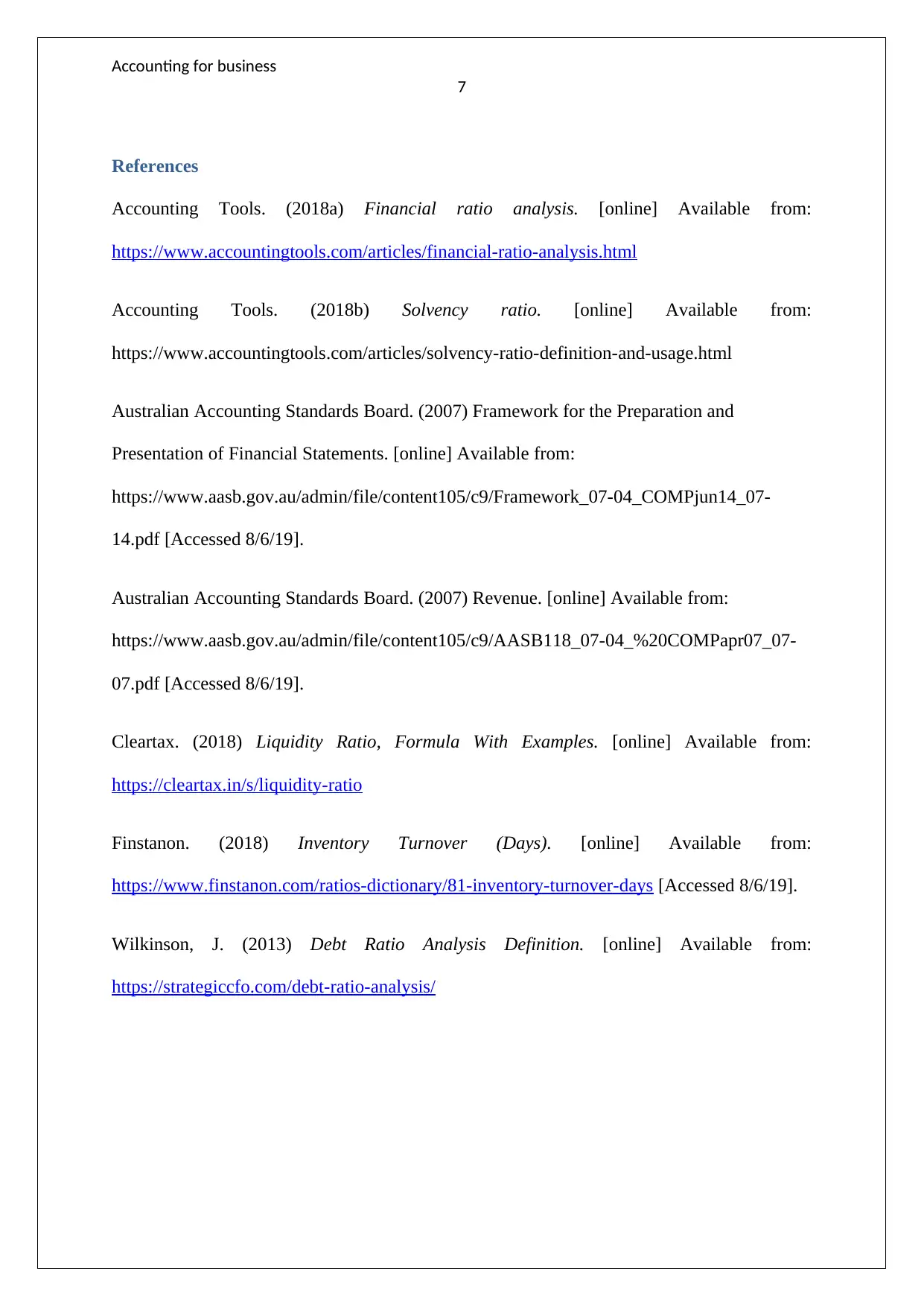
Accounting for business
7
References
Accounting Tools. (2018a) Financial ratio analysis. [online] Available from:
https://www.accountingtools.com/articles/financial-ratio-analysis.html
Accounting Tools. (2018b) Solvency ratio. [online] Available from:
https://www.accountingtools.com/articles/solvency-ratio-definition-and-usage.html
Australian Accounting Standards Board. (2007) Framework for the Preparation and
Presentation of Financial Statements. [online] Available from:
https://www.aasb.gov.au/admin/file/content105/c9/Framework_07-04_COMPjun14_07-
14.pdf [Accessed 8/6/19].
Australian Accounting Standards Board. (2007) Revenue. [online] Available from:
https://www.aasb.gov.au/admin/file/content105/c9/AASB118_07-04_%20COMPapr07_07-
07.pdf [Accessed 8/6/19].
Cleartax. (2018) Liquidity Ratio, Formula With Examples. [online] Available from:
https://cleartax.in/s/liquidity-ratio
Finstanon. (2018) Inventory Turnover (Days). [online] Available from:
https://www.finstanon.com/ratios-dictionary/81-inventory-turnover-days [Accessed 8/6/19].
Wilkinson, J. (2013) Debt Ratio Analysis Definition. [online] Available from:
https://strategiccfo.com/debt-ratio-analysis/
7
References
Accounting Tools. (2018a) Financial ratio analysis. [online] Available from:
https://www.accountingtools.com/articles/financial-ratio-analysis.html
Accounting Tools. (2018b) Solvency ratio. [online] Available from:
https://www.accountingtools.com/articles/solvency-ratio-definition-and-usage.html
Australian Accounting Standards Board. (2007) Framework for the Preparation and
Presentation of Financial Statements. [online] Available from:
https://www.aasb.gov.au/admin/file/content105/c9/Framework_07-04_COMPjun14_07-
14.pdf [Accessed 8/6/19].
Australian Accounting Standards Board. (2007) Revenue. [online] Available from:
https://www.aasb.gov.au/admin/file/content105/c9/AASB118_07-04_%20COMPapr07_07-
07.pdf [Accessed 8/6/19].
Cleartax. (2018) Liquidity Ratio, Formula With Examples. [online] Available from:
https://cleartax.in/s/liquidity-ratio
Finstanon. (2018) Inventory Turnover (Days). [online] Available from:
https://www.finstanon.com/ratios-dictionary/81-inventory-turnover-days [Accessed 8/6/19].
Wilkinson, J. (2013) Debt Ratio Analysis Definition. [online] Available from:
https://strategiccfo.com/debt-ratio-analysis/
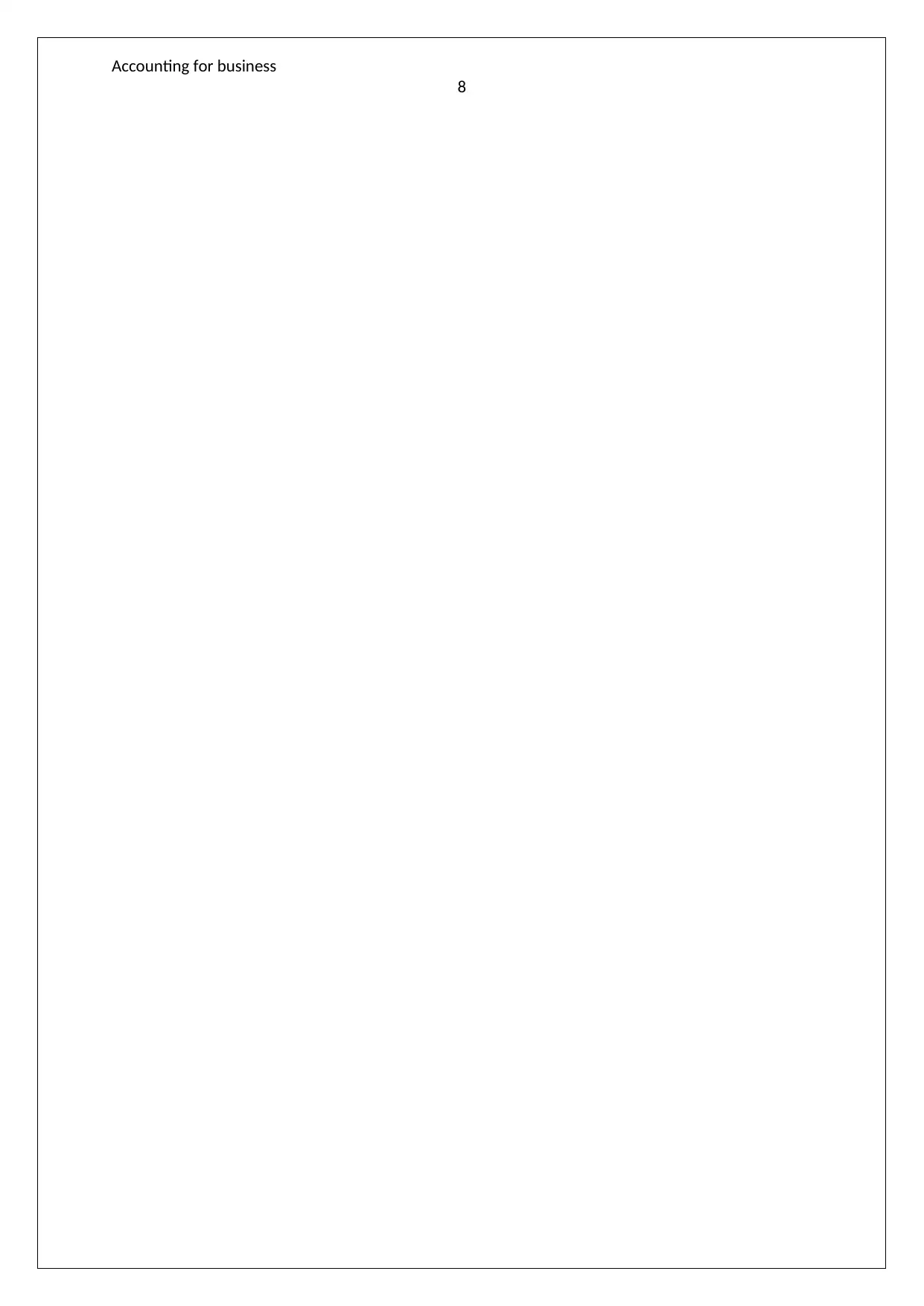
Accounting for business
8
8
⊘ This is a preview!⊘
Do you want full access?
Subscribe today to unlock all pages.

Trusted by 1+ million students worldwide
1 out of 9
Related Documents
Your All-in-One AI-Powered Toolkit for Academic Success.
+13062052269
info@desklib.com
Available 24*7 on WhatsApp / Email
![[object Object]](/_next/static/media/star-bottom.7253800d.svg)
Unlock your academic potential
Copyright © 2020–2025 A2Z Services. All Rights Reserved. Developed and managed by ZUCOL.





